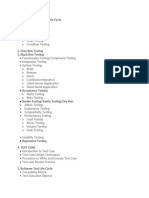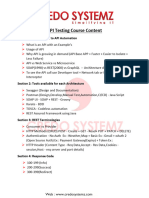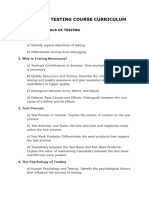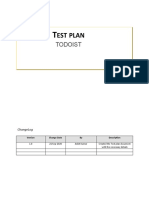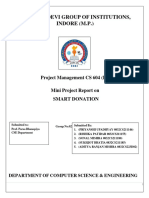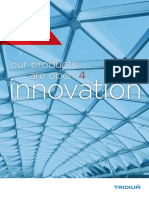0% found this document useful (0 votes)
28 views3 pagesQA Testing Syllabus Explanation
The document outlines a comprehensive QA Testing syllabus covering various topics including Selenium basics, automation frameworks, performance testing, security testing, and API testing. It emphasizes hands-on experience with tools like JMeter, Postman, and Burp Suite, while also discussing testing techniques and the bug life cycle. The content serves as a foundational guide for further exploration in software testing practices.
Uploaded by
ak7209566972Copyright
© © All Rights Reserved
We take content rights seriously. If you suspect this is your content, claim it here.
Available Formats
Download as PDF, TXT or read online on Scribd
0% found this document useful (0 votes)
28 views3 pagesQA Testing Syllabus Explanation
The document outlines a comprehensive QA Testing syllabus covering various topics including Selenium basics, automation frameworks, performance testing, security testing, and API testing. It emphasizes hands-on experience with tools like JMeter, Postman, and Burp Suite, while also discussing testing techniques and the bug life cycle. The content serves as a foundational guide for further exploration in software testing practices.
Uploaded by
ak7209566972Copyright
© © All Rights Reserved
We take content rights seriously. If you suspect this is your content, claim it here.
Available Formats
Download as PDF, TXT or read online on Scribd
/ 3





